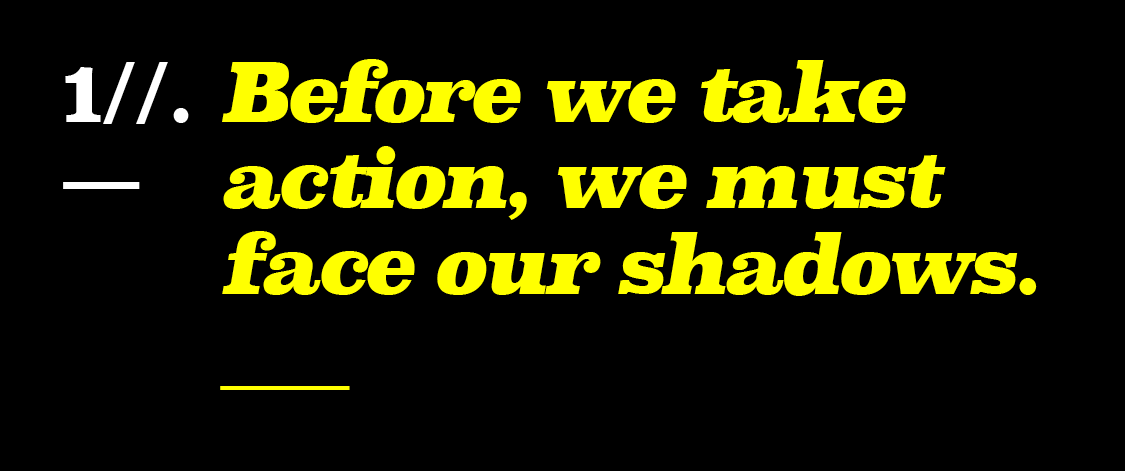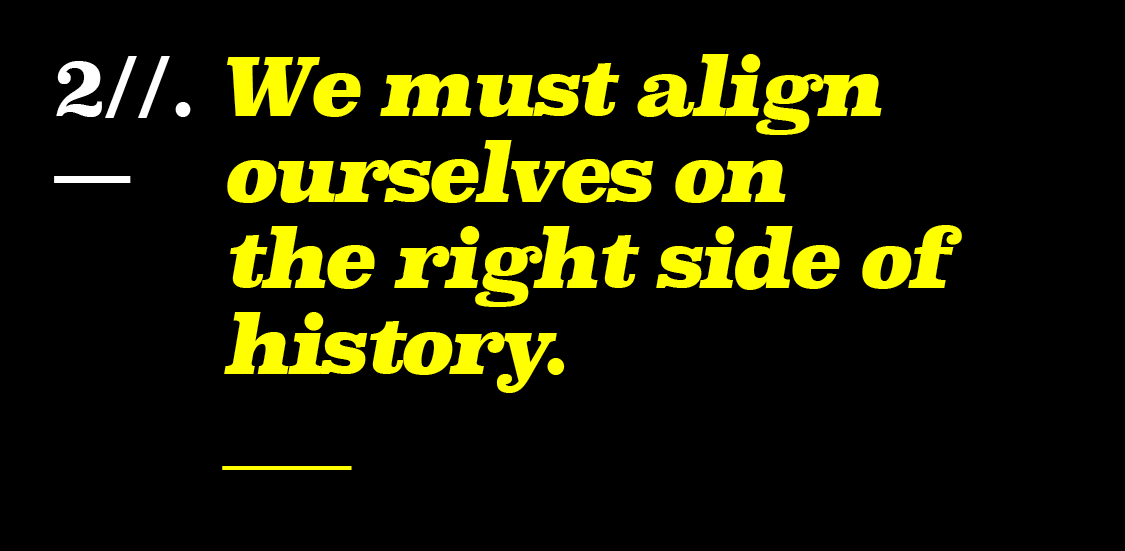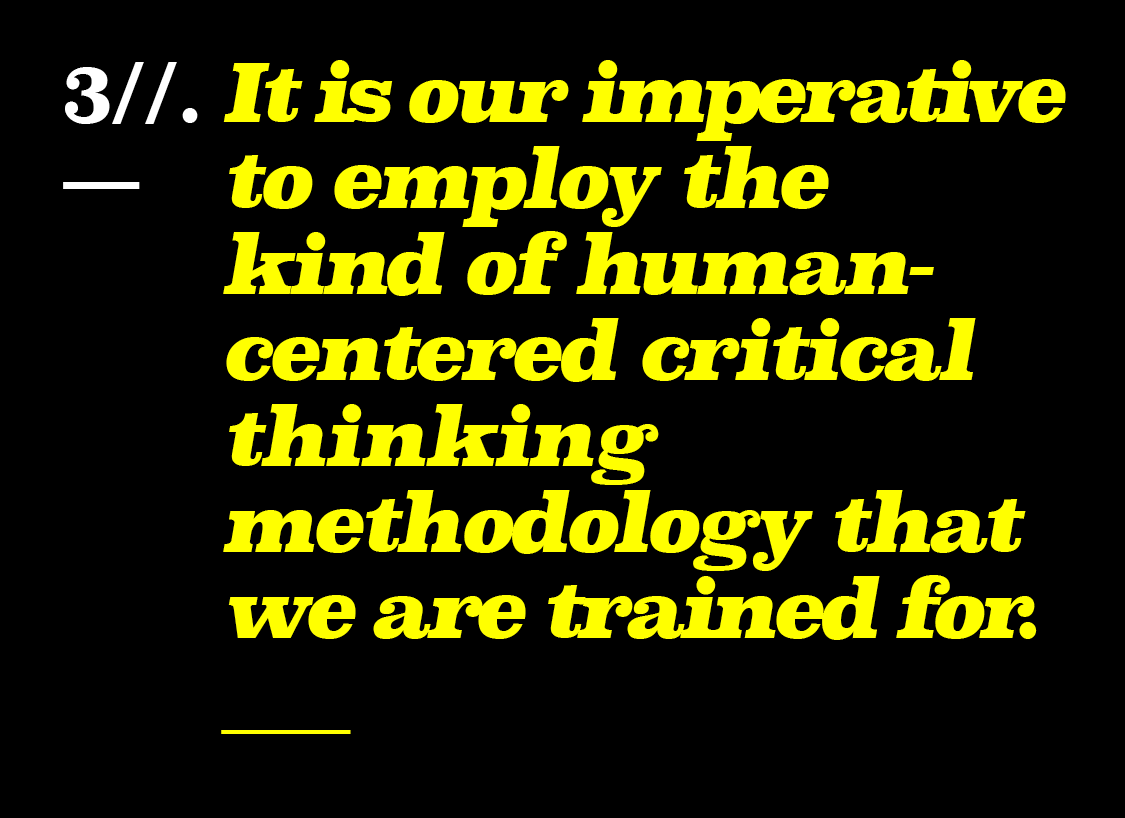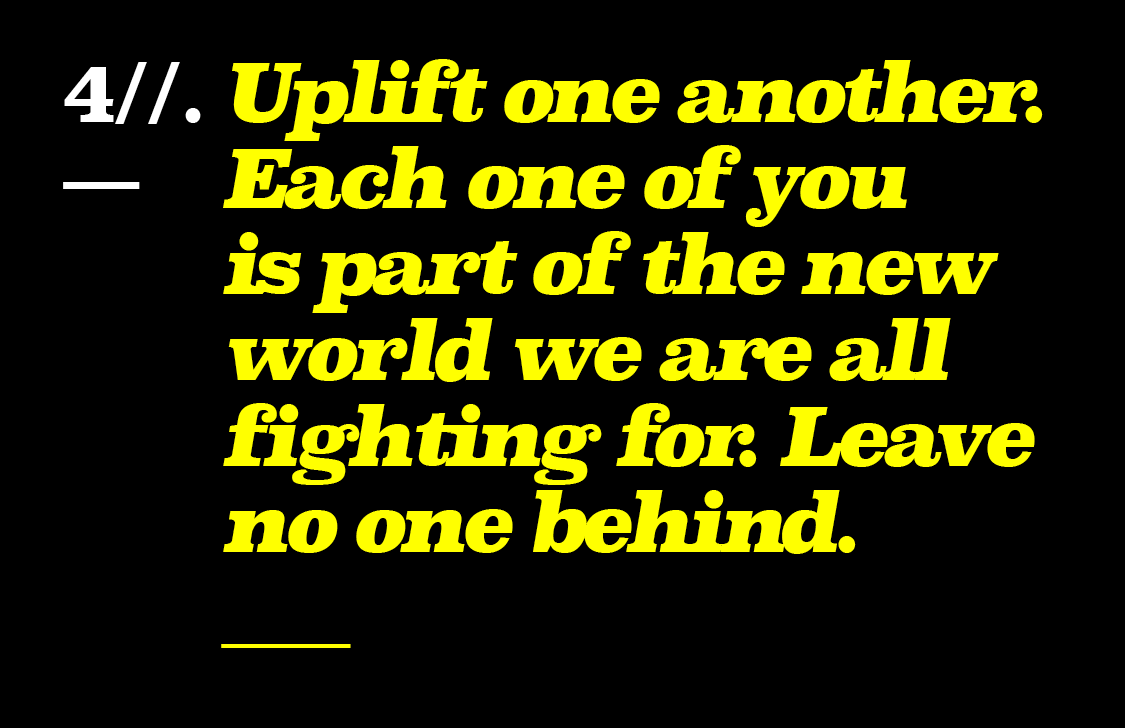We welcome your submissions here.
A letter of love to my fellow non-Black designers, former students, & creative allies
We have the following imperatives—

We say, “Design with empathy” a lot. But to engage empathy requires us to look at the shadows of the world. To do so, we must first sit with our own shadows.
When we practice feeling discomfort, we expand our comfort zone.
When we expand the limits of our comfort, we grow our ability to practice real empathy.
Empathy is our calling. Not profit.
Do not forget this.

Are you afraid of losing a client or a partner for saying #BlackLivesMatter?
That is not a client or partner you need.
The Black Lives Matter movement seeks to defund police, prosecutors, prisons, prison profiteers, and the businesses that profit from systemic practices of mass incarceration, and to allocate those funds to platforms and services that provide community repair and healing. Transformative justice is trauma-informed care. And abolition is both a vision and a strategy. Abolitionists are asking us to reimagine our understanding of protectorship. Designers have the ability to help disrupt current frameworks for public safety.
In California, AB 2261 is a proposed bill that would give a legislative imprimatur to the dangerous and invasive use of face surveillance. It would provide use for the denial of health care, jobs, and housing for black and brown communities. It would endanger protestors. Too often, when we argue against privacy infringements like this, the shoulder-shrug push-back is “Well, I don’t have anything to hide.” That’s great. Now fight for the people who don’t have anything to hide but are targeted anyway.
Corporate tech designers, does your company align with Peter Thiel? Do they see no problem with surveillance AIs? If so, they are not on the right side of history.

Don’t wait. Organizers are swamped. Form your own groups. Fill in the gaps.
Where do you see a need? What is a bridge that leads to trouble/nowhere?
- Look into Black land ownership.
- Google why so many of the disenfranchised don’t trust large banks, lenders, and hospitals.
- Use open source data to demonstrate why Jim Crowe laws have persisted in their covert impacts today, why hate crimes are underreported and under-investigated, and how AI will exacerbate economic inequality with the loss of millions of jobs.
- Seek out resources on trauma-informed care as the movement's approach for moving beyond police abolition, towards transformative justice.
Include and promote Black voices and Black designers. By advocating for all Black lives, we reject definitions of liberation in reductive terms of sex, or gender, or ability.
At all turns, remember that we are here to be of service, not to take charge.

Many of you will feel like you are being displaced. Many may feel like you must sacrifice your- selves for the bigger picture. Friends, remember that you are a part of that picture.
Black liberation is tied to everyone’s liberation from white supremacy. Whether you are Black, white, Indigenous, or a person of color, this is an opportunity for all of us to get into formation towards achieving lasting systemic change. The movement needs all representations to challenge it. The new world is a just world for every one of us.
See also:
BlackLivesMatter.com/resources
www.ShowingUpforRacialJustice.org
ACLU.org/action/
Transformharm.org — A Resource hub about ending violence created by Mariame Kaba
Transformativejustice.eu/en — Modeling transformative justice in the EU, to disrupt current models of law and order
tinyurl.com/UXRRR — Racial justice focused on the tech research/design field
deloris.world — A directory that prioritizes BIPOC creatives for paid hire, and promotes BIPOC-owned businesses seeking pro bono services.
The Black LGBTQIA+ Movement Project at the Transgender Law Center
Emergent Strategy by Adrienne Marie Brown
Pleasure Activism by Adrienne Marie Brown
The Next American Revolution: Sustainable Activism for the Twenty-First Century by Grace Lee Boggs
How Capitalism Underdeveloped Black America: Problems in Race, Political Economy, and Society by Manning Marable
Insurgent Empire by Priyamvada Gopal
The Age of Surveillance Capitalism by Shoshana Zuboff
Twitter and Tear Gas by Zeynep Tufekci
PISCO @publicinformationservice (instagram)
